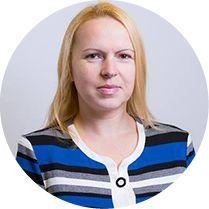Advanced Sensors for Real-Time Monitoring Applications
A special issue of Sensors (ISSN 1424-8220). This special issue belongs to the section "Physical Sensors".
Deadline for manuscript submissions: closed (31 May 2020) | Viewed by 134407
Special Issue Editors
Interests: sensors for real-time monitoring of water quality, pH, phosphates, nitrates, bromide, chlorides, pesticides, and bacteria; alcohol and drug metabolites; food quality monitoring; electromagnetic waves; optical and semiconductor sensors; sensors manufacture technologies; material properties for sensing applications; thin and thick film technology; polymers and mixed oxide film sensors; humidity, pressure, and strain gauges with a focus on miniaturised sensors for medical applications
Special Issues, Collections and Topics in MDPI journals
Interests: development of sensor technologies for use in the meat value chain; robotics and automation; livestock management, behaviour analysis, EEG measurement, well-being monitoring and control; asset tracking technologies and supply chain management; microwave spectroscopy, and development of microwave-based sensors for industrial and medical applications; wireless sensor networks (WSN) and systems; environmental and structural health monitoring; wearable sensor systems; building performance and occupancy monitoring; algal growth, yield and composition enhancement and sensing.
Special Issues, Collections and Topics in MDPI journals
Special Issue Information
Dear Colleagues,
It is impossible to imagine the modern world without sensors, or without real-time information about almost everything: from local temperature to material composition and health parameters – we sense, measure, process data, and act accordingly all the time. In fact, real-time monitoring and information is key to a successful business, an assistant in life-saving decisions that healthcare professionals make, and a tool in research that could revolutionize the future.
To ensure that sensors address the rapidly developing needs of various areas of our lives and activities, scientists, researchers, manufacturers, and end-users need to establish an efficient dialogue so that the newest technological achievements in all aspects of real-time sensing can be implemented for the benefit of the wider community. This Special Issue aims to provide a platform for such a dialogue and invites authors to submit high-quality manuscripts reporting on advances in sensors and sensor systems for existing and emerging real-time monitoring applications. Topics include, but are not limited to, the following:
- Real-time sensing for cognitive mechatronics;
- Real-time monitoring of environmental conditions: air, water, and soil pollution sensors;
- Optical, acoustic, and electromagnetic wave sensing;
- Sustainable agriculture: sensors and robots for a green future;
- Animal health monitoring and sensors for the food industry;
- Real-time sensing in diagnostics, treatment, and rehabilitation;
- Real-time monitoring for assisting living;
- Novel applications of real-time monitoring sensing systems;
- Efficient data processing, simulation validation;
- Novel sensing materials and principles.
Submitted articles should not have been previously published or currently under review by other journals or conferences/symposia/workshops. Papers previously published as part of conference/workshop proceedings can be considered for publication in the Special Issue provided that they are modified to contain at least 40% new content. Authors of such submissions must clearly indicate how the journal version of their paper has been extended in a separate letter to the guest editors at the time of submission. Moreover, authors must acknowledge their previous paper in the manuscript and resolve any potential copyright issues prior to submission.
We are looking forward to your exciting papers!
Dr. Olga Korostynska
Dr. Alex Mason
Guest Editors
Manuscript Submission Information
Manuscripts should be submitted online at www.mdpi.com by registering and logging in to this website. Once you are registered, click here to go to the submission form. Manuscripts can be submitted until the deadline. All submissions that pass pre-check are peer-reviewed. Accepted papers will be published continuously in the journal (as soon as accepted) and will be listed together on the special issue website. Research articles, review articles as well as short communications are invited. For planned papers, a title and short abstract (about 100 words) can be sent to the Editorial Office for announcement on this website.
Submitted manuscripts should not have been published previously, nor be under consideration for publication elsewhere (except conference proceedings papers). All manuscripts are thoroughly refereed through a single-blind peer-review process. A guide for authors and other relevant information for submission of manuscripts is available on the Instructions for Authors page. Sensors is an international peer-reviewed open access semimonthly journal published by MDPI.
Please visit the Instructions for Authors page before submitting a manuscript. The Article Processing Charge (APC) for publication in this open access journal is 2600 CHF (Swiss Francs). Submitted papers should be well formatted and use good English. Authors may use MDPI's English editing service prior to publication or during author revisions.
Keywords
- Real-time monitoring
- Advanced sensors and sensing systems
- Novel monitoring principles
- Advanced sensing materials
- Data processing for sensor networks
- Sensors performance benchmarking: simulation vs validation
- Emerging novel sensor applications
Benefits of Publishing in a Special Issue
- Ease of navigation: Grouping papers by topic helps scholars navigate broad scope journals more efficiently.
- Greater discoverability: Special Issues support the reach and impact of scientific research. Articles in Special Issues are more discoverable and cited more frequently.
- Expansion of research network: Special Issues facilitate connections among authors, fostering scientific collaborations.
- External promotion: Articles in Special Issues are often promoted through the journal's social media, increasing their visibility.
- Reprint: MDPI Books provides the opportunity to republish successful Special Issues in book format, both online and in print.
Further information on MDPI's Special Issue policies can be found here.








